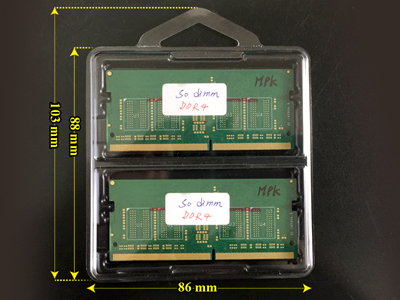Asia-Pacific (APAC) Memory Packaging Market Will Reach $18.4 Billion by 2023 and Is Growing at a CAGR of 5.5% During 2018 – 2023
Asia-Pacific memory packaging market is estimated at $13,564.5 million in 2017, and is projected to witness a CAGR of 5.5% during 2018–2023 and is expected to reach $18,488.1 million by 2023. Surge in investments in fabrication activities in China, rising demand for smartphones across the region, growing popularity of autonomous driving and in-car entertainment (ICE), and continuous improvements in high-bandwidth memory (HBM) and redistribution layer (RDL) are some of the major factors driving the growth of the APAC memory packaging market.
Request for a free sample copy of this research report @ https://www.psmarketresearch.com/market-analysis/apac-memory-packaging-market/report-sample
 On the basis of packaging platform, the market has been categorized into wire-bond, lead-frame, flip-chip, through-silicon via (TSV), and wafer-level chip-scale packaging (WLCSP). Among these, the wire-bond packaging platform is estimated to contribute the largest revenue share, accounting for more than 75% to the APAC memory packaging market in 2017. Comprehensible program adjustments, easy changeovers, and low engineering costs are backing the demand for wire-bond memory packaging solutions. Even with changes in the package design, the wire-bond memory packaging platform continues to be used as the preferred interconnection platform because of its flexibility, low cost and reliability.
On the basis of packaging platform, the market has been categorized into wire-bond, lead-frame, flip-chip, through-silicon via (TSV), and wafer-level chip-scale packaging (WLCSP). Among these, the wire-bond packaging platform is estimated to contribute the largest revenue share, accounting for more than 75% to the APAC memory packaging market in 2017. Comprehensible program adjustments, easy changeovers, and low engineering costs are backing the demand for wire-bond memory packaging solutions. Even with changes in the package design, the wire-bond memory packaging platform continues to be used as the preferred interconnection platform because of its flexibility, low cost and reliability.
China is estimated to contribute the largest revenue share, accounting for more than 40% to the APAC memory packaging market in 2017. This can be mainly attributed to the broader application areas of memory packaging in various consumer electronics, particularly smartphones and tablets. Also, the presence of major memory packaging vendors in the China, such as Samsung Electronics Co. Ltd., SK hynix Inc., and Intel Corporation, is driving the memory packaging industry.
Increasing demand for smartphones in Asia-Pacific is one of the major factors driving the growth of the regional APAC memory packaging market. According to a recent study, the share of smartphone users in China was over 53.3% of the total mobile phone users in the country in 2016, which grew up to over 56% in 2017. With the rising adoption of smartphones, the use of packaged memory chips is also increasing. With the rising prices of DRAM memory, vendors operating in the APAC memory packaging market are increasingly spending on the development of 3D NAND. According to an article published by SK hynix Inc., companies can no longer keep up with 3D NAND demand, and are required to expand their manufacturing capacity. Increasing spending on 3D NAND, complemented by its growing demand, is expected to create a huge growth opportunity for the players in the market in coming years.
Some of the key players in the APAC memory packaging market are Apple Inc., Dell EMC, Qualcomm Technologies Inc., IBM Corporation, Intel Corporation, Cisco Systems Inc., Samsung Electronics Co. Ltd., Winbond Electronics Corporation, Fujitsu Group, LG Electronics, Toshiba Corporation, SK hynix Inc., Nanya Technology Corporation, ASE Group, NEC Corporation, ST Microelectronics N.V., Micron Technology Inc., and Western Digital Corporation.